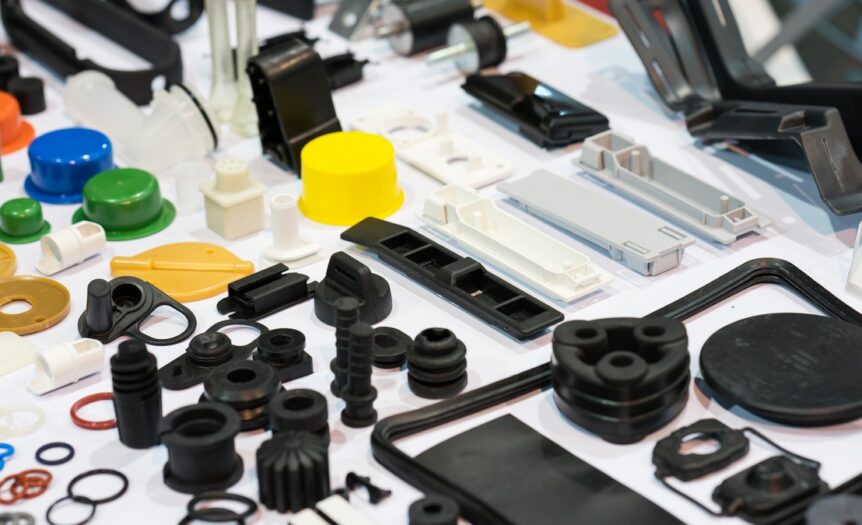Efficient waste reduction defines the success of a plastic manufacturing business. How plastic manufacturers can reduce plastic part waste lies in adopting smarter practices that optimize production processes while cutting costs. From material handling to operational strategies, understanding these aspects can yield significant savings and environmental benefits. Explore the actionable methods below to refine your operations and reduce waste.
Optimize Material Handling and Storage
Material misuse is a significant contributor to waste in plastic manufacturing. Proper storage conditions reduce material degradation while ensuring it remains usable for longer. Ensure raw materials remain free from moisture, contamination, and temperature fluctuations. Training employees to recognize improper handling practices can also curb unnecessary losses. With efficient material handling, fewer remnants end up discarded, saving both resources and money.
Maximize Production Efficiency
Streamlining production lines and reducing downtimes significantly impact waste management. Frequent equipment maintenance ensures machines function without errors that might generate defective parts. Additionally, investing in high-quality molds and dies reduces the likelihood of scrapped products due to imperfections. Consistent monitoring of production data helps identify inefficiencies, allowing for swift corrections to processes that increase waste.
Improve Design Considerations
Products designed with waste reduction in mind minimize material usage while maintaining structural integrity. Innovative design software enables engineers to precisely map out component needs, cutting down on excess material. Simple adjustments, such as designing parts to require less trimming, can drastically lower scrap rates. Collaborations between engineers and production teams result in smart designs that align with the manufacturing process.
Implement Effective Inventory Management
Inventory management plays a far larger role in waste reduction than businesses may realize. Overstocking leads to obsolete materials that do not see use, especially in industries relying on volatile market demands or shelf-life-sensitive plastics. A strong understanding of proper inventory control will help manufacturers avoid overstock. Prioritizing just-in-time (JIT) practices can align purchasing with production requirements, reducing the buildup of unused inventory.
Conclusion
Balancing efficiency with waste reduction is key to a sustainable, cost-effective business model. By optimizing material handling, streamlining production, improving designs, and managing inventory wisely, manufacturers can see tangible benefits. Plastic manufacturers can reduce plastic part waste by integrating these strategies into their operations. Start focusing on these areas today to reduce waste and set your business apart in a competitive industry.










 Deering Estate
Deering Estate
 Massage Envy South Miami
Massage Envy South Miami
 Calla Blow Dry
Calla Blow Dry
 My Derma Clinic
My Derma Clinic
 Sushi Maki
Sushi Maki
 Sports Grill
Sports Grill
 The Healthy Kitchen
The Healthy Kitchen
 Golden Rule Seafood
Golden Rule Seafood
 Malanga Cuban Café
Malanga Cuban Café

 Kathleen Ballard
Kathleen Ballard
 Panter, Panter & Sampedro
Panter, Panter & Sampedro
 Vintage Liquors
Vintage Liquors
 The Dog from Ipanema
The Dog from Ipanema
 Rubinstein Family Chiropractic
Rubinstein Family Chiropractic
 Your Pet’s Best
Your Pet’s Best
 Indigo Republic
Indigo Republic




 ATR Luxury Homes
ATR Luxury Homes


 2112 Design Studio
2112 Design Studio
 Hamilton Fox & Company
Hamilton Fox & Company
 Creative Design Services
Creative Design Services
 Best Pest Professionals
Best Pest Professionals
 HD Tree Services
HD Tree Services
 Trinity Air Conditioning Company
Trinity Air Conditioning Company
 Cisca Construction & Development
Cisca Construction & Development
 Mosquito Joe
Mosquito Joe
 Cutler Bay Solar Solutions
Cutler Bay Solar Solutions


 Miami Royal Ballet & Dance
Miami Royal Ballet & Dance
 Christopher Columbus
Christopher Columbus
 Pineview Preschools
Pineview Preschools
 Westminster
Westminster
 Carrollton
Carrollton
 Lil’ Jungle
Lil’ Jungle
 Frost Science Museum
Frost Science Museum
 Palmer Trinity School
Palmer Trinity School
 South Florida Music
South Florida Music
 Pinecrest Orthodontics
Pinecrest Orthodontics
 Dr. Bob Pediatric Dentist
Dr. Bob Pediatric Dentist
 d.pediatrics
d.pediatrics
 South Miami Women’s Health
South Miami Women’s Health

 The Spot Barbershop
The Spot Barbershop
 My Derma Clinic
My Derma Clinic




 Miami Dance Project
Miami Dance Project

 Rubinstein Family Chiropractic
Rubinstein Family Chiropractic
 Indigo Republic
Indigo Republic

 Safes Universe
Safes Universe
 Vintage Liquors
Vintage Liquors
 Evenings Delight
Evenings Delight





 Atchana’s Homegrown Thai
Atchana’s Homegrown Thai
 Baptist Health South Florida
Baptist Health South Florida

 Laser Eye Center of Miami
Laser Eye Center of Miami
 Visiting Angels
Visiting Angels
 OpusCare of South Florida
OpusCare of South Florida

 Your Pet’s Best
Your Pet’s Best





 HD Tree Services
HD Tree Services
 Hamilton Fox & Company
Hamilton Fox & Company


 Creative Design Services
Creative Design Services